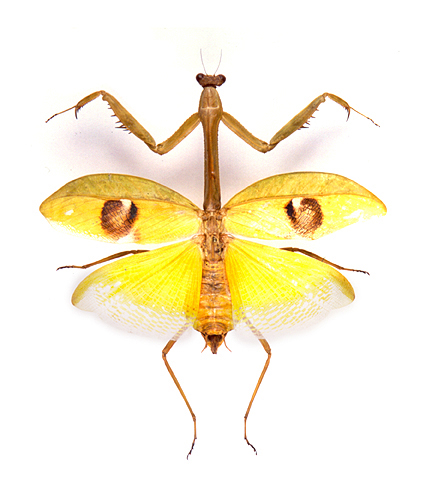Mantodea - The Mantids
The word “mantis” is of Greek origin, meaning prophet, or diviner. At some point in time the word was linked to an insect of distinct appearance, an insect whose aspect is that of constant prayer or absolution: The Praying Mantis. The name should have been “Preying Mantis” because this meditative pose is assumed as the mantis hunts for food. Its forelegs, modified into killing claws armed with spikes, are unique in form and define members of the order Mantodea. Sharing many similarities with cockroaches, perhaps even evolving from them (historical records are poor and the earliest known fossil mantis dates back only about 36-25 million years, from the Oligocene period), the mantids became distinct by exhibiting entirely carnivorous behavior. Fearless hunters, they possess excellent eyesight and are keenly aware of their surroundings, actively pursuing or ambushing their prey. Since they spend most of their time stalking potential quarry on foliage, many species mimic leaves, bark, twigs and flowers. Those mantids that inhabit arid lands and hunt on the ground will often mimic stones. Other arthropods (whatever can be subdued) make up the bulk of an average mantis’ diet, but large tropical species (15cm/6”) are capable of capturing and consuming small birds and reptiles. All mantids are notorious for eating each other. This tendency towards cannibalism may be responsible for their solitary existences. This cannibalism may also play an important role in mating, as the males of some species have been reported to perform better sexually after their head has been eaten (Ladies, please don't try this at home!). Another thing unique to mantids is their ootheca, or egg case: females lay eggs in a frothy mass, which hardens on contact with the air. Mantids exhibit incomplete metamorphosis with the nymphs usually emerging as wingless miniatures of the adults, ready to stalk and hunt. In some tropical species, the young mantids resemble ants for the first two instars, later molting into the colors of the adult. There are around 1,800 known species of mantids.


